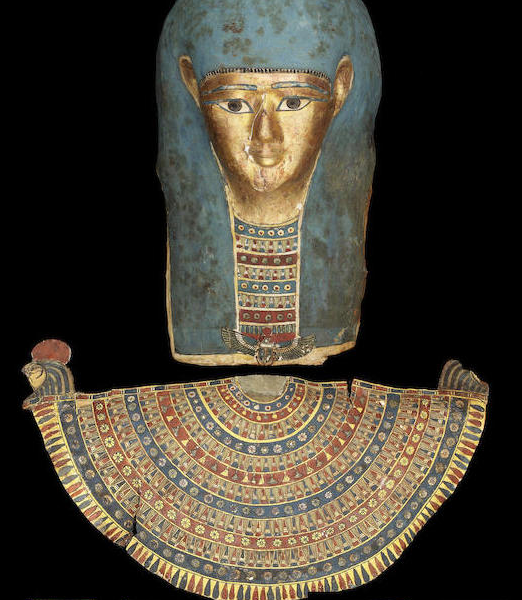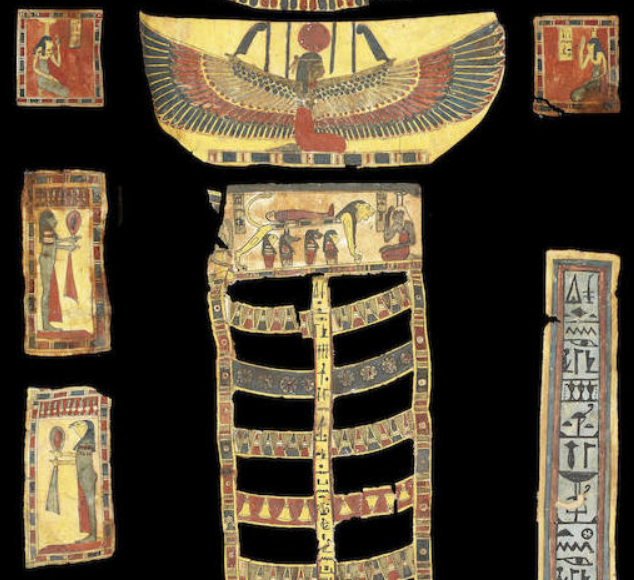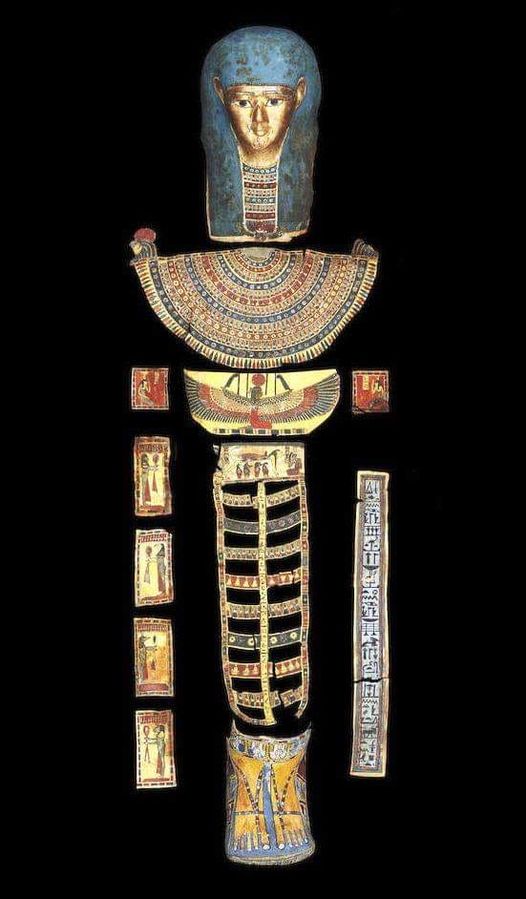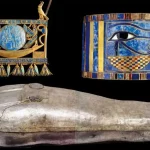Egyptian Gilded Cartonnage Mummy Mask, Ptolemaic

In the annals of ancient Egyptian history, the Ptolemaic Period stands as a remarkable chapter marked by a fusion of Egyptian tradition and Hellenistic influence. Among its enduring legacies are the exquisite artifacts that embody both the religious fervor and artistic sophistication of the era. Among these treasures, the gilded cartonnage mummy mask and trappings from this period, crafted between 305-30 BC, stand as luminous testaments to the beliefs and burial practices of ancient Egypt.

Fashioned from layers of linen or papyrus soaked in plaster and adorned with brilliant gilding, the cartonnage mummy mask and trappings were designed not merely as funerary coverings but as vessels of spiritual transformation and protection for the deceased. This intricate process began with the meticulous construction of a cartonnage base, often molded to fit the contours of the deceased’s body, ensuring a seamless integration with the mummified form within.
The craftsmanship of these artifacts is breathtaking in its detail and symbolic richness. The mummy mask, typically fashioned in the likeness of the deceased, bears the visage of serenity and eternal peace, its features expertly rendered to evoke a sense of divine transcendence. The use of gold leaf, meticulously applied to the surface, symbolizes not only the deceased’s journey into the afterlife but also their transformation into a divinely blessed entity, akin to the gods themselves.

Accompanying the mummy mask are the trappings, which include elaborate collars, pectorals, and decorative panels that adorn the mummified body. These elements serve not only as ornamental enhancements but also as talismans imbued with protective spells and symbolic motifs, designed to safeguard the deceased on their journey through the underworld and ensure their eternal reunion with the gods.
The iconography depicted on the cartonnage trappings reflects the syncretic nature of the Ptolemaic period, blending traditional Egyptian deities with Hellenistic influences. Images of Isis, Osiris, and Anubis intertwine with Greco-Roman motifs, demonstrating the cultural exchange that flourished under Ptolemaic rule and highlighting Egypt’s enduring spiritual traditions amidst changing political landscapes.

Today, these gilded cartonnage mummy masks and trappings are revered treasures housed in esteemed institutions such as the Egyptian Museum in Cairo or the Metropolitan Museum of Art in New York. Their preservation not only honors the beliefs and rituals of ancient Egyptian society but also offers a window into the profound reverence for the afterlife and the meticulous artistry that defined funerary practices during the Ptolemaic Period.
In exploring these artifacts, we are transported across millennia to a time when art, religion, and mortality converged in the quest for eternal life. The gilded cartonnage mummy mask and trappings stand as timeless symbols of Egypt’s enduring cultural legacy, where the splendor of craftsmanship and the spirituality of ancient beliefs continue to captivate and inspire the modern world.










